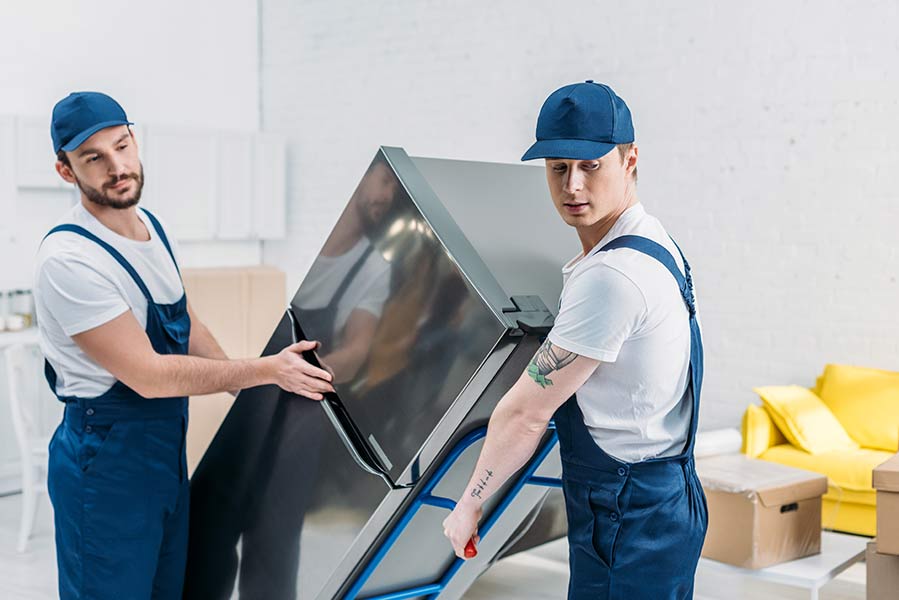Nobody enjoys moving a fridge. It’s heavy and awkward, and one wrong move can damage your floors or the appliance itself. I’ve helped countless customers with residential moving services who’ve mistakenly tackled this job without proper preparation. Trust me – the details matter, from securing wobbly shelves to navigating narrow hallways.
Have you ever tried squeezing a refrigerator through a doorway that seems two inches too small? Or felt that moment of panic when it starts to tip on stairs? I’ll share real-world tips to save your back, walls, and sanity.
Properly Clean and Defrost the Refrigerator
Clean and defrost your fridge before moving day. Unplug it first, then empty all food (throw out perishables unless you’ve got a good cooler). Pull out those shelves, drawers, and ice trays – they’ll break if you don’t. Wash everything with warm, soapy water and dry thoroughly.
For the inside, mix water and baking soda to wipe down surfaces – nobody wants mystery smells in their new place. Leave the door open to air dry completely. Don’t rush defrosting your freezer; just let the ice melt naturally after unplugging. Mop up any water before moving day.
Secure Loose Shelves and Drawers
Those rattling shelves and sliding drawers will break during transport if you don’t secure them. Empty everything out first. Pull shelves and drawers completely out of the fridge and check for cracks or loose parts. Put back what you can, then grab some packing tape – the strong stuff, not the cheap kind that’ll peel off halfway through your move.
Tape everything down tight. That weird noise you hear while moving is usually a loose shelf about to crack. A few minutes with tape now saves you buying replacement parts later.
Use a Dolly for Transportation
Your back will thank you for using a dolly. Make sure it can handle your fridge’s weight – most appliance dollies work fine, but check the weight rating. Position it close, then tip the fridge slightly toward you to slide the dolly underneath. Center it for balance – an off-center fridge becomes a dangerous physics experiment. Strap it down tight.
Tilt back and move slowly, keeping a solid grip. Take corners like you’re carrying a sleeping baby – gentle and controlled. Stairs? Get a strong friend and take your time. Nobody’s impressed by speed when it comes to moving fridges.
Protect Your Floors and Walls
Your security deposit (or your own home’s surfaces) deserve protection when moving this beast. Here’s how:
- Slide thick furniture blankets under the fridge to prevent floor scratches
- Wrap cardboard around sharp corners that might gouge your walls
- Secure all protective materials with tape – things shift during the move
- Walk your planned route first, moving anything that might cause a collision
- Get someone to spot you through tight spaces – they’ll see problems you can’t
Safely Position the Refrigerator in Its New Location
Getting your fridge into its final spot requires patience. Clean the area first – you don’t want to slide it through dust or debris that might damage the bottom. Ease it into place gradually rather than with one forceful push. Check that it sits level both side-to-side and front-to-back; uneven fridges run inefficiently and wear out faster.
Leave breathing room around the refrigerator for proper ventilation. Adjust those little feet at the bottom to eliminate wobbling and ensure stability. Let it sit unplugged for at least 2 hours before connecting it to power – the coolant needs time to settle after being jostled around.
Had enough of fridge-moving stress? Most people have. Save your Saturday (and possibly your back) by hiring pros who move refrigerators daily. They’ll bring the right equipment and experience while you focus on the thousand other moving tasks on your list. Get a quote today – you might be surprised how affordable peace of mind can be.
Other Moving Articles:
